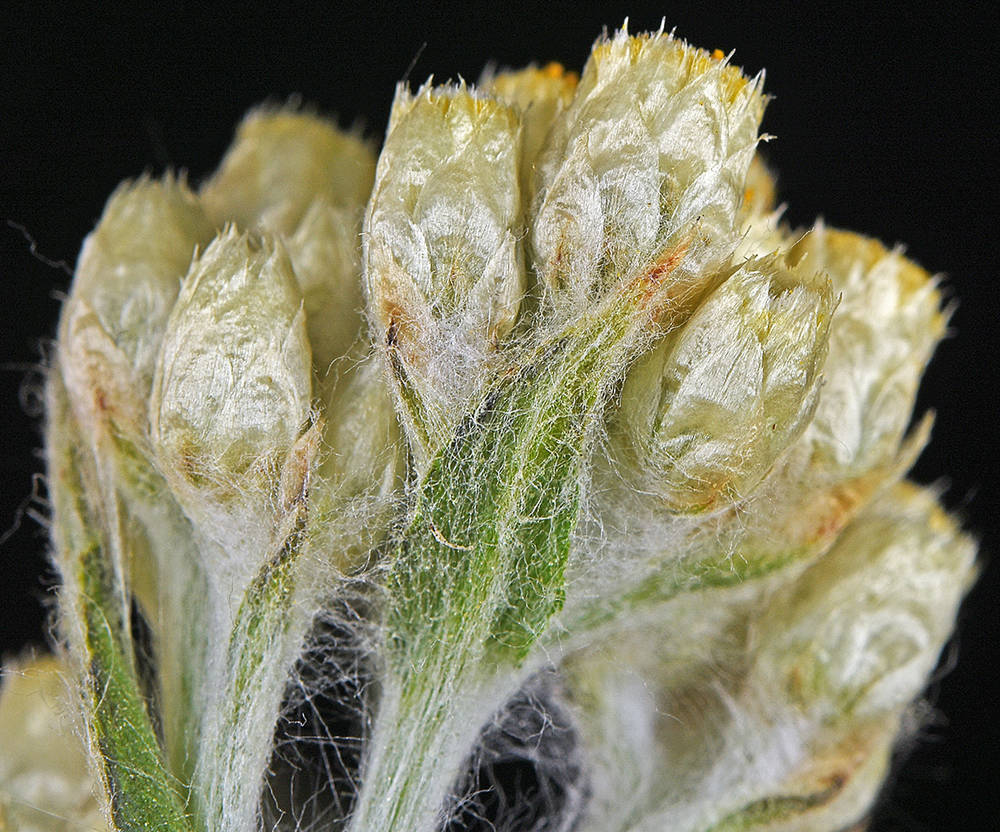
Plants annual or biennial, 4–10 dm.
Stems pilose- or floccose-pubescent, stalked-glandular.
Leaves 2–10 cm, linear to lanceolate or oblanceolate, bases decurrent, surfaces contrasting in color, abaxially gray-tomentose, sometimes stalked-glandular on midveins, adaxially green, glabrous or scarcely tomentose, usually stalked-glandular.
Involucres 4.5–6 mm.
Phyllaries in 4–5 series, white or brownish, surfaces glabrous.
Outer florets 50–100; corolla tips yellow.
Inner florets 5–12.
Fruits 0.4–0.5 mm, brown; pappi white.
Open woodlands, grasslands, riverbanks, roadsides. Flowering Jul–Sep. 1000–2000 m. BW, Casc. CA, ID, WA; north to British Columbia, northeast to Nova Scotia, east to MA, southeast to NM, south to Mexico. Native.
as described under Pseudognaphalium macounii
Annuals or biennials (often sweetly fragrant), 40-90 cm; taprooted. Stems stipitate-glandular throughout (usually persistently lightly white-tomentose distally). Leaf blades (not crowded, internodes mostly 5+ mm) lanceolate to oblanceolate, 3-10 cm × 3-13 mm (distal linear), bases not clasping, decurrent 5-10 mm, margins flat to slightly revolute, faces weakly bicolor, abaxial tomentose, adaxial stipitate-glandular, otherwise glabrescent or glabrous. Heads in corymbiform arrays. Involucres campanulo-subglobose, 4.5-5.5 mm. Phyllaries in 4-5 series, stramineous to creamy (hyaline, shiny), ovate to ovate-oblong, glabrous. Pistillate florets 47-101(-156). Bisexual florets 5-12[-21]. Cypselae not ridged, ± papillate-roughened.Flowering July-Oct. Dry, open habitats, pastures, open woods or edges, roadsides; 50-2600(-3000) m; Alta., B.C., Man., N.B., N.S., Ont., P.E.I., Que., Sask.; Ariz., Calif., Colo., Conn., Idaho, Ill., Ind., Maine, Mass., Mich., Minn., Mont., N.H., N.Mex., N.Y., Ohio, Oreg., Pa., S.Dak., Tenn., Utah, Vt., Va., Wash., W.Va., Wis., Wyo.; Mexico.Pseudognaphalium macounii is recognized by its stipitate-glandular, proximally glabrescent stems, bicolor and decurrent leaves, relatively large and many-flowered heads, and hyaline, shiny phyllaries. Reports of P. macounii from Texas are based on specimens of P. viscosum.